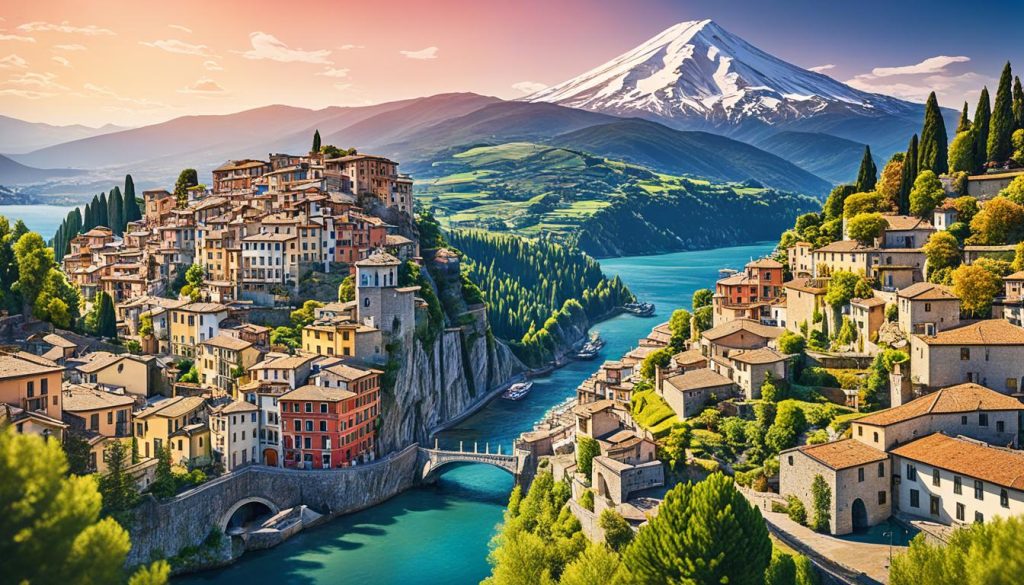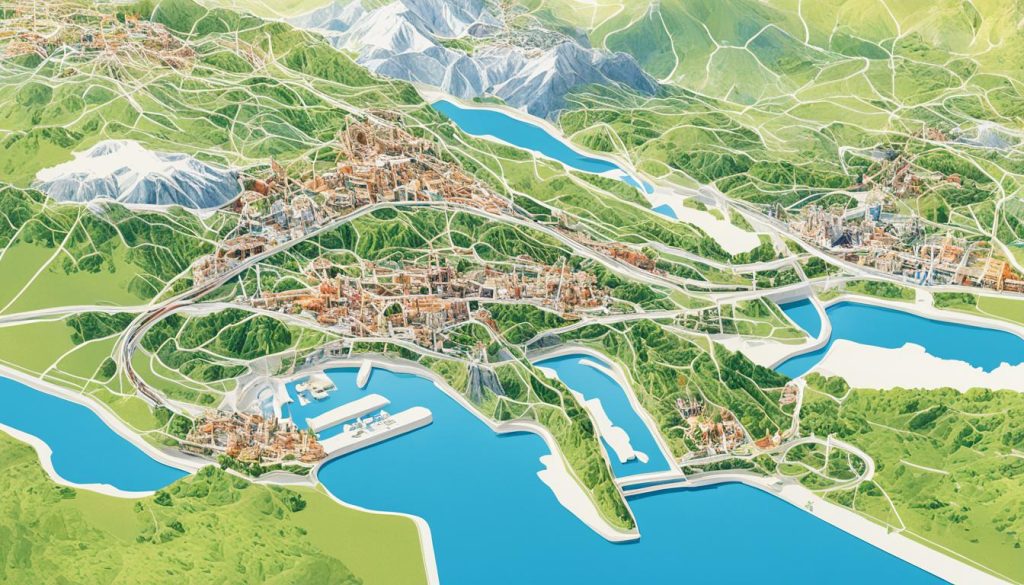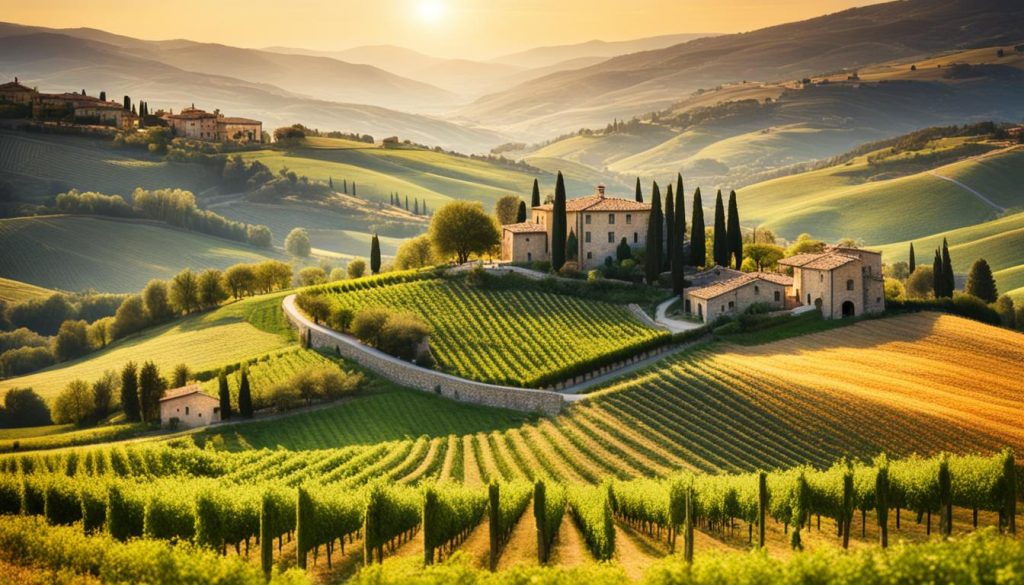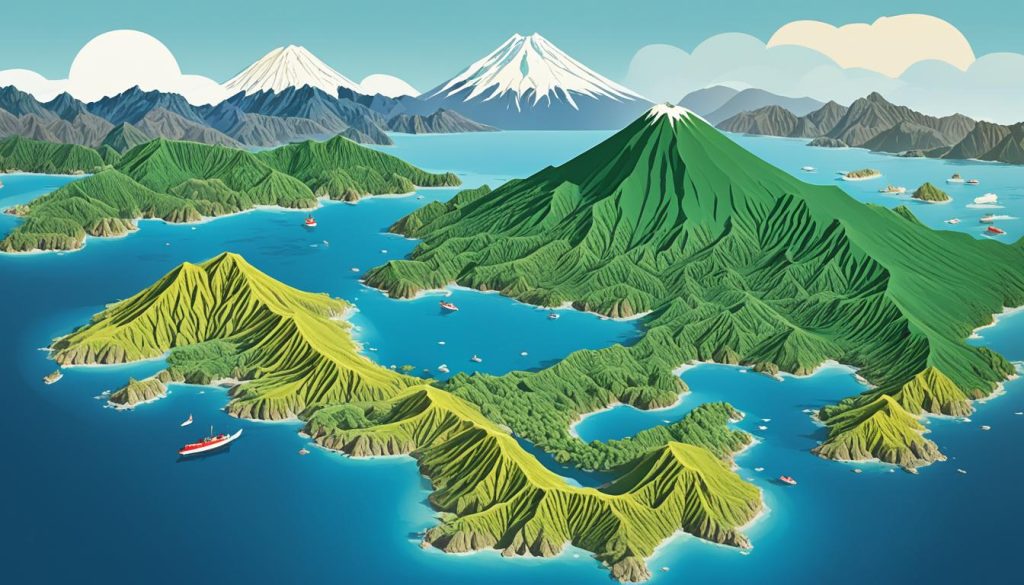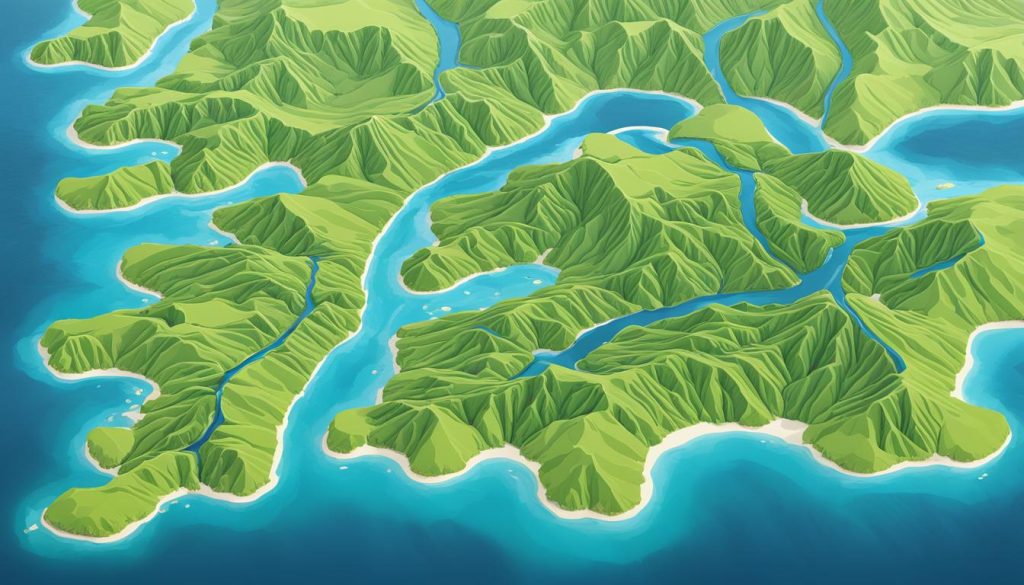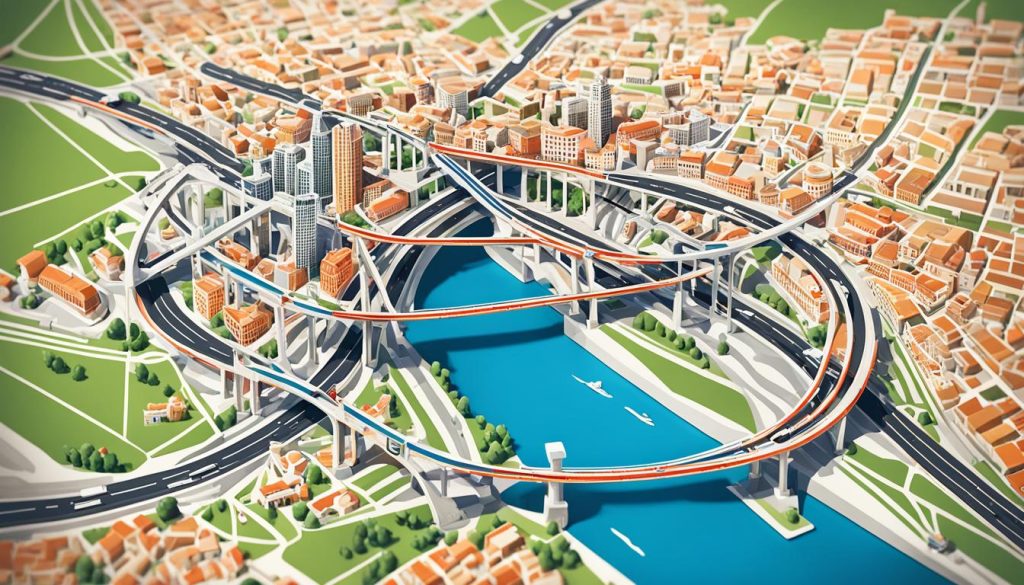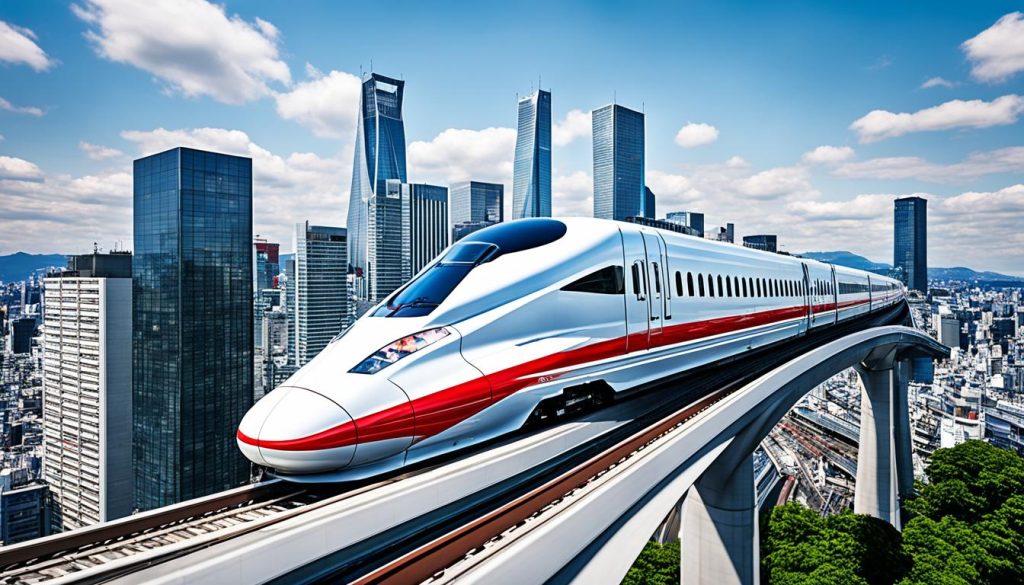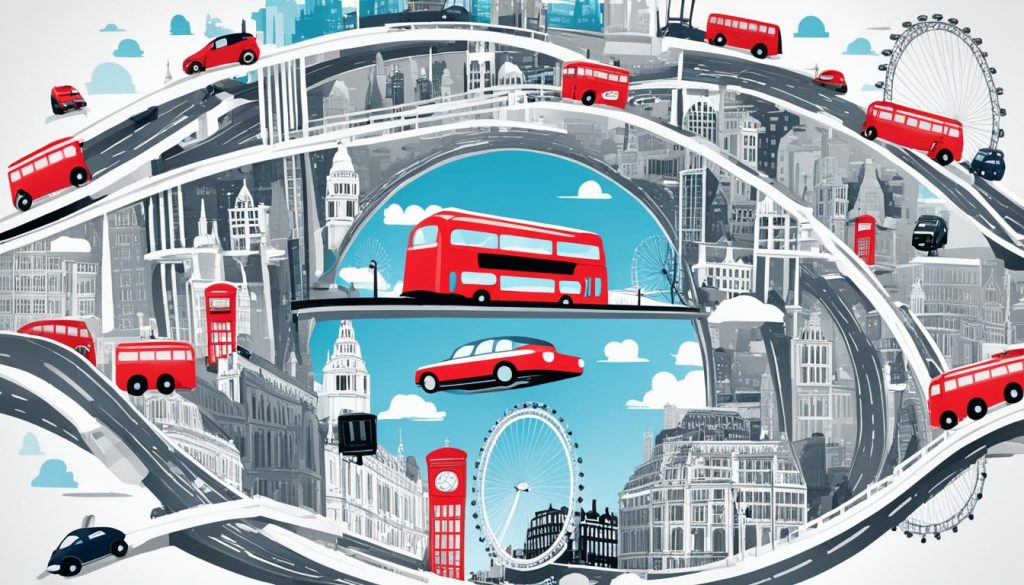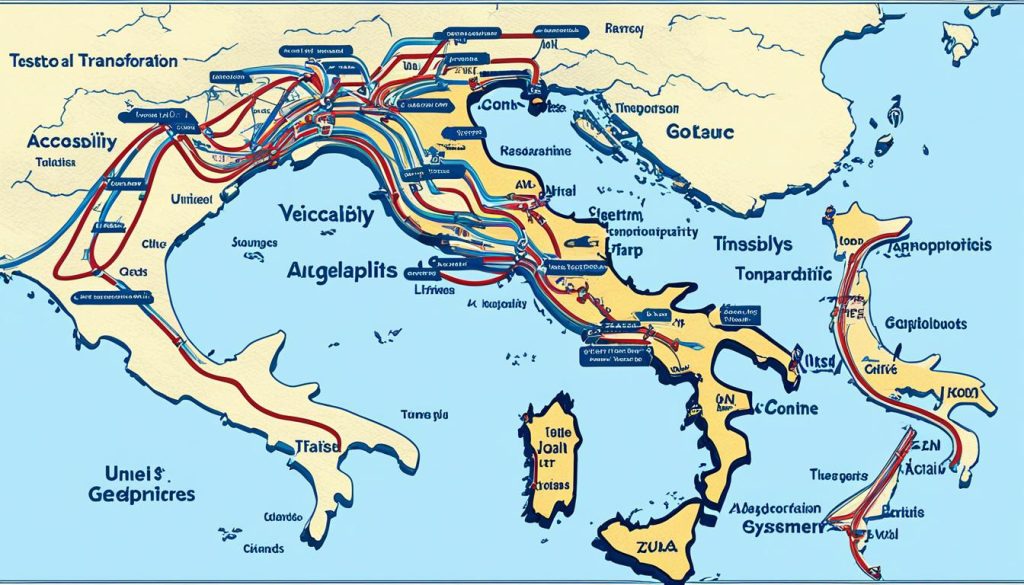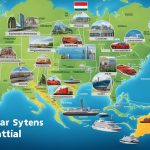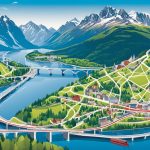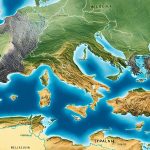A nation’s wealth often links closely with its geography and infrastructure. Looking at Italy, Japan, and the United Kingdom, we see clear differences and surprising similarities. Italy shines with Mediterranean warmth, Japan stands strong against earthquakes, and the UK mixes old with the new beautifully.
Our journey explores geography in Europe and Asia. We’ll see how natural gifts and clever design lead to growth in different settings. As we compare Italy, Japan, and the UK, we discover how each country turned geographical challenges into wins for infrastructure.
Introduction to Comparative Geography
Geography helps us understand the world’s physical outlines and unique traits of each area. It looks into how geography, history, culture, and changes in landscapes make nations unique.
Understanding the Geographic Landscape
The geographic landscape shapes societies, impacting their economy and how they express culture. In Italy, mountains and coasts lead to varied ways of life and a complex political past. This highlights the importance of geography.
Exploring the Historical Evolution of Territories
History shows how humans have interacted with land. Japan’s islands made it more isolated, affecting its culture. The UK’s naval power was due to its island position, pushing it to expand beyond its borders.
Analysing Interconnections between Geography and Culture
Cultural geography helps us see how people connect with their world. In Italy, the mix of dialects shows this interaction. The UK’s mix of global and local cultures also shows how landscapes influence peoples’ lives and identities.
The Geographical Diversity of Italy, Japan, and the United Kingdom
Exploring the geographical diversity of Italy, Japan, and the United Kingdom reveals a rich fabric of landscapes. Each country boasts unique landscapes that form its identity. Italy shines with its Alps and Mediterranean shores. Japan is known for its volcanic islands and diverse ecosystems. Meanwhile, the United Kingdom displays a variety of climates, from Scotland’s rugged uplands to England’s green farms.
Climate greatly influences each country’s geographic story. Italy’s Alps contrast with its warm southern beaches. Japan’s climates range from subtropical in the south to colder in the north. The UK enjoys a temperate maritime climate. These climate patterns shape the landscapes and the way people live in these nations.
- Italy’s landscape offers a continuous interplay between its snowy northern regions and the sun-drenched southern locales, creating an assorted mix of habitats.
- Japan’s multitude of islands, with their coastal limits and volcanic interiors, craft unique ecological conditions that are distinct to each island.
- The United Kingdom’s geography takes on multiple forms, with its craggy Scottish highlands starkly differing from the verdant plains and soft undulations of England’s countryside.
The geographical diversity of these countries leads to stunning scenery and diverse ecosystems. These landscapes are ever-changing. They add layers of complexity to each nation’s ecological identity.
Italy’s Unique Geographic Traits
Italy’s boot-shaped peninsula greatly shapes its culture and environment. It has a Mediterranean climate, making its scenery diverse and beautiful. From the Alps in the north to the sunny coasts in the south, Italy’s landscape draws in many visitors. This helps local economies grow.
The Mediterranean Influence on Italy’s Climate and Terrain
Italy enjoys mild winters and hot summers thanks to the Mediterranean. This climate supports Tuscany’s vineyards and Sicily’s citrus groves. Olive trees and pines are scattered across a landscape that includes beaches and snowy mountains.
Environmental Challenges and Natural Beauty of the Italian Landscape
Italy’s geography highlights its beauty but also shows its environmental challenges. Earthquakes are a risk, especially in the Apennine mountains. Volcanoes like Vesuvius and Etna are always active, changing the land. Coastal erosion is a threat to historic sites and resorts. Yet, Italy’s natural wonders, from the Amalfi Coast cliffs to Emilia-Romagna’s hills, showcase nature’s beauty.
- Hot summers and mild winters underscore Italy’s Mediterranean climate
- The Italian landscape spans from Alpine terrain to idyllic coastal regions
- Environmental issues include seismic threats and the impact of coastal erosion
- Natural attractions enchant locals and tourists, from Tuscan vineyards to Campania’s ancient ruins
Geographical Features of Japan: An Archipelagic Perspective
Japan stands out because of its spot in the Japanese archipelago. It stretches over the Pacific with more than 6,800 islands. Among them, Honshu, Hokkaido, Kyushu, and Shikoku are the biggest. The country’s close relationship with the sea shapes its climate and culture, making the coastal geography very important.
The landscape is marked by stunning volcanic landscapes. Mount Fuji is not just beautiful but also a spiritual icon. Volcanic activities remind Japan of its place on the Pacific Ring of Fire. This means they have to be ready for earthquakes and tsunamis that might come their way.
- Volcanic Terrain: The geography includes several active and dormant volcanoes, creating a landscape with unique ecological niches and fertile soils.
- Tectonic Setting: Frequent earthquakes make seismic understanding and innovative building techniques a must for ensuring public safety and minimizing damage.
- Maritime Climate: Surrounded by the sea, Japan experiences a temperate climate with significant regional variation, influencing agricultural practices and daily life.
- Biodiversity Hotspots: The varied climates across the archipelago sustain a diverse range of flora and fauna, many of which are endemic to Japan.
Knowing about Japan’s geography is crucial for both its people and leaders. It forms the base of the country’s strength against natural challenges. By understanding the Japanese archipelago and its island geography, we see how nature, growth, and society mingle closely.
The British Isles: Geography of the United Kingdom
The UK stands out as an island country, surrounded by a rich array of landscapes. This diversity has deeply influenced its history, economy, and culture for centuries. From Yorkshire’s gentle dales to Scotland’s stark cliffs, the geography of the British Isles shapes the lives of its people and creates a diverse array of environments.
Understanding the UK’s Island Geography
The UK includes Great Britain and Northern Ireland, making it a significant island nation. Its waters have offered protection and helped in global trade. This has made the UK a major player on the world stage. The country’s geography has greatly influenced its roads, cities, and overall development.
Comparing the Topographies of England, Scotland, Wales, and Northern Ireland
In England, you’ll find everything from the hilly Lake District to the fertile southeast. Scotland is known for its towering mountains and peaceful lochs, offering some of the most spectacular views. Wales brings together mountains and a stunning coastline, like the cliffs of Pembrokeshire. Northern Ireland showcases green hills and the Giant’s Causeway’s unique basalt columns. Together, they show the topographical variety of the British Isles.
- England: A landscape defined by diversity, from dynamic cities to tranquil countryside.
- Scotland: A terrain dominated by the Highland Boundary Fault, creating a distinct highland-lowland divide.
- Wales: Valleys cutting through ancient mountains alongside a deeply indented coastline.
- Northern Ireland: Characterised by its glacial valleys and breathtaking coastal features.
This geographical variety shapes each nation within the UK. It dictates economic activities, cultural expressions, and how they build their cities and roads. The UK’s landscape continues to amaze and challenge, offering a rich environment that is the foundation of the British Isles.
Infrastructure and Development in Italy
Italy has been improving its Italian infrastructure to support strong economic development. It focuses on linking the North and South, crucial for its progress. This commitment has helped in regional development.
Italy’s success lies in its transport networks. These connect the whole country, creating unity. The famous Autostrade motorway is a key part of this, linking cities to the countryside.
Dealing with urban planning in ancient cities is challenging. It involves protecting old sites while supporting modern life. Italy manages to keep its history alive and meet today’s needs.
- Fast trains cut travel times, bringing areas closer.
- Public transport investments aim for cleaner air and better city living.
- Southern projects use infrastructure to kick-start the economy.
Modern projects in Italy respect its old charm. This balance promotes growth across all regions. It shows investment in both city and rural areas, aiming for nationwide development.
- Existing motorways are being improved to handle more traffic.
- Rail network expansions make travel easier for everyone.
- Urban projects respect history while adding new facilities.
Italy keeps enhancing its landscape with infrastructure. This supports its historic significance and quest for wealth. It shows Italy’s innovative spirit.
Japan’s Technological Advancements in Infrastructure
Japan constantly innovates its infrastructure, setting global standards in efficiency and resilience. The country’s unique landscape and the high risk of natural disasters have led to the creation of strong and efficient transport systems.
The Impact of Geography on Japan’s Transport and Communications Networks
Japan’s complex geography has shaped its transport and communication systems. It boasts advanced urban railways and efforts for rural connectivity. These ensure economic growth and bring people together.
Innovative Building Techniques in Response to Natural Disasters
Japan is proactive in building earthquake-resistant structures. This focus emphasizes the importance of safety and ongoing service. Their innovative spirit shines through in these enduring solutions to disaster threats.
- Pioneering seismic isolation and energy-dissipation technologies for skyscrapers.
- Developing flexible pipelines to maintain municipal services during an earthquake.
- Advancing flood barrier technology to protect coastal and riverside communities.
Transport and Civil Infrastructure in the United Kingdom
In the UK, civil engineering has been key in linking the whole country. It creates a network crucial for economic growth and community connection. We see this in the vast motorways and railways, like the M6 and M25 and the Eurostar lines. These are examples of engineering excellence. Also, there’s a strong drive for sustainability in these projects.
Apart from roads and trains, airports like London Heathrow expand the UK’s global reach. Projects today blend new technology with historical awareness. This approach helps in urban development. It keeps a balance between modern needs and preserving the UK’s rich history.
- Sophisticated motorway networks facilitate cross-country travel and commerce.
- Rail networks, including high-speed trains, signify progress in public transport efficiency.
- Airports play a crucial role in establishing the UK as a nexus for international travel and business.
- Civil engineering projects embrace sustainability, contributing to national development.
- Public infrastructure development operates in harmony with the conservation of historical architecture.
The efforts to improve UK’s transport and civil infrastructure have a clear future vision. They aim to maintain high standards in public services, boost national growth, and enhance connections both within the UK and internationally.
Comparing Accessibility and Transportation Systems
An in-depth look at Italy, Japan, and the UK shows how they manage transport. Each country has its own way of dealing with urban and rural access. This affects daily life and shows what each nation values economically and socially.
Contrasting Urban and Rural Transport Solutions in the Three Nations
Italy’s transport system reflects its cultural diversity. But, there’s a big difference between city and countryside transport. Cities like Rome and Milan offer more public transport options than rural areas, where people mostly use private cars.
In Japan, public transport is highly efficient, especially in cities. The Shinkansen bullet trains and local services are extremely reliable. Rural areas are also well-served by well-planned bus and train routes, keeping even remote areas connected.
The UK’s transport system mixes old and new. London has its famous Underground, while rural areas have buses. Some rural places are well-connected, but others aren’t, showing the challenge of balancing urban and rural needs.
Assessing the Efficiency and Reach of Public Transit
In Italy, trains and buses meet the needs of tourists and locals alike. Yet, there can be delays, often due to the country’s diverse landscape and economy.
Japan stands out for its punctual and consistent service. Its approach to public transport is seen as a model worldwide, admired for its efficiency.
The UK has a vast rail network, from the south to Scotland. But, people wish for better punctuality and more frequent services. This is vital for overall transport efficiency.
Diving into these transport methods shows us more than how people get around. It tells us about societal norms and what’s important to each country. Accessibility isn’t just about the destination. It’s about how travel fits into our daily lives, showing a nation’s identity and its drive for innovation and inclusivity.
Environmental Conservation Efforts and Sustainability Measures
Nations like Italy, Japan, and the UK have taken strong steps towards protecting our planet. They use different methods to support growth that does not harm the environment. These include growing renewable energy, protecting wildlife in national parks, and reducing harmful gases.
In Italy, they are heavily investing in renewable energies like wind and solar. Their national parks not only protect nature but also support eco-tourism. They also focus on managing waste and saving water to keep the environment clean.
Japan is also doing its part by using advanced tech to get energy from geothermal, solar, and wind sources. The country values living in harmony with nature, seen in their careful upkeep of national parks. Their green projects in transport and building construction aim for a greener future.
- Investing in alternative energy solutions to offset traditional energy reliance.
- Enhancing public transport to reduce vehicular emissions.
- Implementing strict recycling and conservation laws to protect natural resources.
The UK aims to cut its greenhouse gas emissions to zero by 2050. They are boosting renewable energy, especially wind power. Protecting its national parks is key to keeping its natural beauty. Green policies are seen in all levels of government and business, showing the UK’s strong commitment to being green.
- Expanding offshore wind farms to capitalise on the country’s maritime geography.
- Fostering urban green spaces and conservation projects within cities.
- Encouraging sustainable agricultural practices across rural landscapes.
Italy, Japan, and the UK are working together for a healthier planet. Their efforts in environmental conservation show their promise to a sustainable and greener future for everyone.
Compare geography and infrastructure between Italy, Japan and United Kingdom
Exploring the geographic analysis of Italy, Japan, and the UK shows their unique features and infrastructure. These differences stem from their history and affect their economies today. Each country faces its own country-specific challenges in infrastructure, shaped by their geography.
Analysing Similarities and Differences in Geographic and Infrastructural Aspects
Each country’s geography influences its infrastructure. Italy has long coasts and is earthquake-prone. Japan deals with earthquakes too, due to its location. The UK faces changing weather. All these factors shape how they build and adapt.
Infrastructure adaptation varies greatly among these nations. They have tailored their transport and urban design to fit their landscapes. They also share and learn from each other’s innovations.
Looking closely, Italy blends old and new in its cities. Japan builds with earthquakes in mind. The UK uses its landscape for green energy.
Impact of Geographic Limits on Infrastructural Development
Geography not only limits space but guides construction choices. Japan combats high humidity and decay with special materials. Italy’s hills and quake zones need strong buildings. The UK stands up to its varied weather with durable structures.
Yet, these limits also spark creativity. They push advancements in education, health, and business. Thoughtful infrastructure that fits the environment boosts connectivity and reliability, benefiting everyone.
Economic Impact of Geographic and Infrastructural Elements
The study of geography and economy shows that natural features can affect a country’s wealth. Countries like Italy, Japan, and the United Kingdom are great examples. These places show how nature and buildings boost their economies.
- Natural resources play a key role in economy. They support jobs in areas like Italy’s Po Valley and Japan’s coasts. This helps both local communities and international trade.
- Unique landscapes draw tourists, helping the travel and service industries. Places like the Tuscan countryside, Japan’s shrines, and British cities attract visitors all year.
- Being in the right place can make a country a key trading point. Japan, Italy, and the UK are all strategically placed for trade.
Good infrastructure is vital for economic growth. It makes sure supply chains work well and goods can move easily.
- Efficient transport systems, like Japan’s bullet trains and the UK’s Crossrail, keep economies strong. They make travelling and trading faster.
- Having advanced communication helps businesses stay competitive globally. Italy is working hard to improve its digital setup.
- Investing in infrastructure helps less developed areas catch up, reducing economic gaps inside a country.
Clearly, geography and infrastructure are crucial for economic progress. They help regions grow and connect countries to the world market. This is why policy-makers must carefully plan to use both nature and tech for a better economic future.
Challenges and Opportunities: Adapting to Geographic Realities through Infrastructure
Nations face both challenges and chances due to their geography. Adapting and innovating in infrastructure is key to tackling these. It shows how creative humans can be when solving problems posed by geography.
Mitigating Geographic Challenges through Innovative Infrastructural Solutions
Different countries tackle their geographic issues with unique solutions. Italy, for example, builds buildings that can stand against earthquakes. This not only saves people’s lives but also protects their rich history. Japan has built huge tsunami barriers, showing how new technology can help us survive. Similarly, the UK has developed strong flood defences to fight against its frequent floods. This shows their commitment to innovation and safety.
Capitalising on Geographic Advantages for Economic Growth
Geography plays a big role in shaping economic chances. Developing infrastructure that matches a country’s geographic benefits can boost its economy. Italy draws tourists with its beautiful landscapes and historic sites. Japan uses its strategic location to enhance its role in global trade. The UK’s diverse landscapes help in managing resources and energy. These geographic pluses help each country stand out globally.
Conclusion
When we look at Italy, Japan, and the UK, we find a captivating comparison. Each country is shaped by its natural landscapes. They have also shaped their infrastructure to match the land. This dual influence is an international tale of difference, similarity, and innovation.
In Italy, the autostrades weave through diverse lands. Japan’s structures stand tall against earthquakes. The UK’s transport deals with changing weather. Together, they show how land shapes development. This study paints a picture of geography’s role in building infrastructures that support sustainable growth.
As we look forward, we see that these countries will keep improving their infrastructure to meet new challenges. These include climate change and rising populations. By studying Italy, Japan, and the UK, other nations can find new ways to blend geography and infrastructure. This could lead to a more resilient future for everyone.


